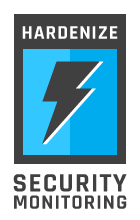Is PCI 6.6 good for web application firewalls?
PCI requirement 6.6, which endorses web application firewalls, raises the profile of this technology but leaves a lot to be desired. Requirement 6.6 is a part of Section 6, which deals with development and maintenance of systems and applications. Sections 6.1 through 6.5 are all sound, dealing with issues such as patching, change control and secure development practices. At a glance, Requirement 6.6 seems sound too:
"6.6 Ensure that all web-facing applications are protected against known attacks by applying either of the following methods:
- Having all custom application code reviewed for common vulnerabilities by an organization that specializes in application security
- Installing an application layer firewall in front of web-facing applications.
Note: This method is considered a best practice until June 30, 2008, after which it becomes a requirement. "
One issue with the text is that it puts two very different techniques against each other. Organisations are going to choose only one technique to achieve compliance, where, in reality, they should be using both. Looking past that, the wording works very well for web application firewalls, in the sense that most organisations are likely to choose to deploy a WAF rather than go through a very long and very expensive process of code review.
And that is exactly what causes me to worry: organisations looking for PCI certification are going to choose web application firewalls because they are the less ugly choice. Not because of the merits, of which there are many.
As someone making a living from web application firewalls, I should probably be more optimistic about the whole affair. After all, there is no doubt the level of interest in web application firewalls is rising, in no small part due to the PCI standard. The sales are increasing too. And I am sure many organisations will attempt to use the products they've purchased; some of them will like them. PCI 6.6 may actually lead to a wide adoption of web application firewalls. But it still troubles me that many of the purchases of this remarkable technology are going to be made for the wrong reasons.
At the moment the addition of web application firewalls to the PCI standard looks like an afterthought. There is a slight danger that the products will be bought and installed, but not actively used. The PCI standards needs to give WAFs at least the same treatment it currently gives to intrusion detection systems: prescribe not only the installation, but a continuous use, including various options such as blocking, detection-only deployment, virtual patching and the use of WAFs for traffic logging and monitoring.


